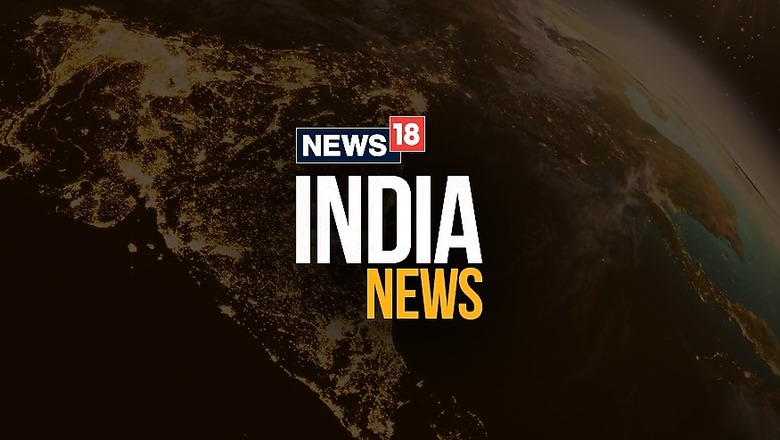
views
Here are some key developments as the novel coronavirus spread around the world:
Dec. 31, 2019: China alerts the World Health Organization of 27 cases of “viral pneumonia” in the central city of Wuhan. Authorities shut down a wet market in Wuhan the next day, after discovering some patients were vendors or dealers.
Jan. 11, 2020: A 61-year-old man is reported as the first death. Preliminary lab tests cited by Chinese state media point to a new type of coronavirus.
Jan. 13: A Chinese woman is quarantined in Thailand, the first detection of the virus outside China.
Jan. 15: Japan confirms its first case.
Jan. 20: South Korea confirms its first case.
Jan. 22: The WHO convenes an emergency meeting. Director-general Tedros Adhanom Ghebreyesus says the new coronavirus does not yet constitute an international emergency.
Jan. 23: China issues a lockdown for millions of people in Wuhan and Hubei province as the death toll rises to 18.
Jan. 24: The first cases in Europe are reported in France.
Jan. 25: China bans wildlife trade, and extends the Lunar New Year holiday for workers and schools. Hong Kong leader Carrie Lam announces measures to limit links with China.
Jan. 27: The United States warns against travel to China, a day after five people who had been in Wuhan become the first confirmed cases in America.
Jan. 30: The WHO declares the outbreak a public health emergency of international concern.
Feb. 1: The United States, Singapore, Russia and Australia ban foreign travelers who were recently in China.
Feb. 2: A 44-year-old man dies in the Philippines, the first death outside China.
Feb. 3: Investors erase $393 billion from China’s benchmark stock index, selling the yuan and dumping commodities on the first day of trade after the Lunar New Year break.
Feb. 4: Hong Kong reports its first death. Macau shutters casinos. American Airlines Group and United Airlines Holdings Inc suspend flights to Hong Kong.
Feb. 5: About 3,700 passengers are quarantined aboard the Diamond Princess, a Carnival Corp cruise liner, off Japan. More than 700 passengers test positive and 14 die. The quarantine lasts nearly a month.
Feb. 7: Li Wenliang, a Chinese ophthalmologist who had been reprimanded for issuing an early warning about the Wuhan outbreak, dies, triggering wide public mourning and rare expressions of anger against the government.
Feb. 15: An elderly Chinese tourist hospitalized in France is the first fatality reported in Europe.
Feb. 19: A spike in infections in South Korea linked to a church congregation is declared a “super-spreading event.” South Korea later seeks murder charges against leaders of the Shincheonji Church.
Feb. 22: Italy seals off its hard-hit northern regions of Lombardy and Veneto.
Feb. 25: The U.S. Centers for Disease Control and Prevention warns Americans to begin preparing for the virus to spread, signaling a change in tone.
Feb. 26: The number of new infections inside China is overtaken by those elsewhere for the first time. Italy and Iran emerge as new epicenters.
Feb. 28: The S&P 500 suffers its biggest weekly drop since the 2008 financial crisis on fears of a global recession. More than $5 trillion is wiped from global market value.
March 1: Two deaths are reported at a nursing home near Seattle, thought to be the first in the United States at the time.
March 3: In a surprise move, the U.S. Federal Reserve cuts interest rates by half a percentage point to try to stem the economic damage. Markets continue to fall.
March 6: The number of infected people exceeds 100,000 globally. Deaths top 3,400.
March 9: Crude oil prices plunge 25%, the biggest daily rout since the 1991 Gulf War, as Saudi Arabia and Russia begin a price war.
March 10: “The whole of Italy is closed now,” reads a headline in the Corriere della Sera newspaper after Rome imposes the most severe controls on a Western nation since World War Two.
March 11: The Bank of England slashes interest rates by half a percentage point. The British government unveils a budget splurge designed to stave off a recession.
March 12: Canadian Prime Minister Justin Trudeau, 48, goes into quarantine for two weeks after his wife, Sophie, tests positive.
March 13: U.S. President Donald Trump declares a national emergency to free up $50 billion in federal aid.
March 14: France and Spain join Italy in imposing lockdowns on tens of millions of people, Australia orders foreign travelers to self-isolate, and other countries extend entry bans to try to stop the spreading virus.
March 17: Brazil reports its first death. The European Union bars outside travelers.
March 19: Italy’s death toll overtakes China. Russia records its first death. The virus has spread to more than 170 countries.
March 20: California issues an unprecedented state-wide “stay at home order” and New York closes non-essential businesses.
March 24: The International Olympic Committee and Japan Prime Minister Shinzo Abe announce the postponement of the 2020 Summer Games. India goes under lockdown.
March 25: A $2 trillion coronavirus aid package, dubbed “the largest rescue package in American history,” is approved by Congress.
March 27: South Africa starts nationwide lockdown. Kenya, the Democratic Republic of Congo and other African countries try to ringfence cities.
April 2: Global cases shoot past 1 million as deaths soar in the United States and western Europe.
April 5: British Prime Minister Boris Johnson, 55, is admitted to hospital with coronavirus after suffering a fever and cough. He is discharged on April 12.
April 7: Early data shows COVID-19 is killing African Americans at a higher rate than the general U.S. population, underscoring disparities in healthcare access.
April 8: Wuhan reopens. Its 11 million citizens can leave their homes for the first time in months.
April 10: Global deaths reaches 100,000 and confirmed cases exceed 1.6 million.
April 13: A handful of European countries begin to ease restrictions. Spain restarts construction and manufacturing, while Austria and Italy allow certain stores to reopen. Danish children can return to school.
April 14: Trump halts funding to the WHO over its handling of the pandemic, drawing condemnation from infectious disease experts.
April 23: Trump says scientists should explore whether injecting disinfectant might help COVID-19 patients, horrifying doctors who worry some people will poison themselves with bleach.
May 4: J. Crew Group Inc files for bankruptcy protection after temporary store closures cost it almost $900 million in sales. In the following weeks, Neiman Marcus Group and J.C. Penney Co Inc would also be pushed to the brink.
May 8: The U.S. economy lost 20.5 million jobs in April, the steepest plunge since the Great Depression. The unemployment rate surges to 14.7%.
May 9: Avianca Holdings, Latin America’s second-largest airline, files for bankruptcy. It would be followed by LATAM Airlines Group, the continent’s largest carrier, on May 26.
May 11: Thousands of visitors stream into Shanghai Disneyland, the first park reopened by Walt Disney Co.
May 13: The virus could become endemic like HIV and never go away, the WHO says.
May 14: The United Nations warns of a looming mental illness crisis as millions of people are surrounded by death and disease and forced into isolation, poverty and anxiety.
May 18: Trump says he is taking hydroxychloroquine as a preventive medicine despite medical warnings against the use of the malaria drug. Subsequent studies, including a large multi-country trial by the WHO, find little benefit to COVID-19 patients treated with the drug.
May 22: Brazil overtakes Russia to become the world No. 2 in cases.
May 25: George Floyd, a 46-year-old African American, dies after a police officer kneels on his neck for nearly 9 minutes. The incident triggers weeks of protests against racism and police brutality around the world, and health experts warn the demonstrations may help spread the virus.
May 29: Trump says he is terminating the U.S. relationship with the WHO over its handling of the outbreak, accusing the UN agency of becoming a puppet organization of China.
June 8: New Zealand lifts all social and economic restrictions except border controls, one of the first countries to return almost to pre-pandemic normality.
June 15: After 83 days of lockdown, England allows retail stores to reopen.
June 19: Cases in Brazil top 1 million and deaths approach 50,000, a new nadir for the world’s second worst-hit country.
June 23: After more than 100 days of lockdown, New York City residents can get haircuts, shop at reopened stores and dine outdoor.
June 28: Global deaths exceed 500,000 and confirmed cases top 10 million.
July 4: England allows pubs, restaurants and hair salons to reopen. Spain’s northeastern region of Catalonia reimposes restrictions.
July 6: India overtakes Russia to become the No. 3 country by infections, at nearly 700,000.
July 7: Brazilian President Jair Bolsonaro says he tested positive for the virus. The WHO acknowledges there is “evidence emerging” of airborne transmission, after previously saying most droplets expelled from the nose and mouth of an infected person quickly sink to the ground.
July 8: Australia’s second-largest city, Melbourne, goes back into lockdown.
July 21: Trump, in a shift in rhetoric, encourages Americans to wear masks if they cannot maintain social distance and warns the pandemic will get worse before it gets better.
July 25: Britain imposes a two-week quarantine on travellers from Spain, throwing Europe’s summer reopening into disarray.
Aug. 5: As the global death toll tops 700,000, the WHO says young people must curb their party instincts to help prevent new outbreaks.
Aug. 6: Trump says a vaccine is possible before the Nov. 3 election. Africa’s cases surpass 1 million, with South Africa accounting for more than half.
Aug. 10: Brazil’s death toll tops 100,000, continuing to climb as most cities reopen shops and dining.
Aug. 11: Russia becomes the first country to approve a COVID-19 vaccine, after less than two months of human testing.
Aug. 18: The S&P 500 index closes at a record 3,389.78 points, recovering completely from its February crash and underlining the disconnect between a rally driven by government stimulus spending and a recession-hit economy.
Sept. 2: COVID-19 infections in Europe are back to levels seen in March, the head of the EU’s public health agency said.
Sept. 7: India overtakes Brazil as the second-worst hit country, with more than 4.2 million cases.
Sept. 6: AstraZeneca suspends late-stage trials of its experimental vaccine due to serious side effects in a participant, casting doubts for an early rollout. Trials in Britain resume less than a week later.
Sept. 18: European countries from Denmark to Spain and Greece announce new restrictions after cases spike.
Sept. 22: Faced with fast-spreading infections, Britain tells people to work from home, and bars and restaurants to close early, but stops short of a full lockdown.
Sept. 23: Johnson & Johnson begins trial of a single-shot vaccine that, if proven effective, could simplify distribution. Rivals from Moderna Inc, Pfizer Inc and AstraZeneca all require two shots separated by several weeks.
Sept. 29: Global deaths exceed 1 million. Deaths from coronavirus-related illnesses have doubled from half a million in just three months, led by fatalities in the United States, Brazil and India.
(Compiled by Tiffany Wu and Leela de Kretser; Editing by Daniel Wallis)
Disclaimer: This post has been auto-published from an agency feed without any modifications to the text and has not been reviewed by an editor




















Comments
0 comment